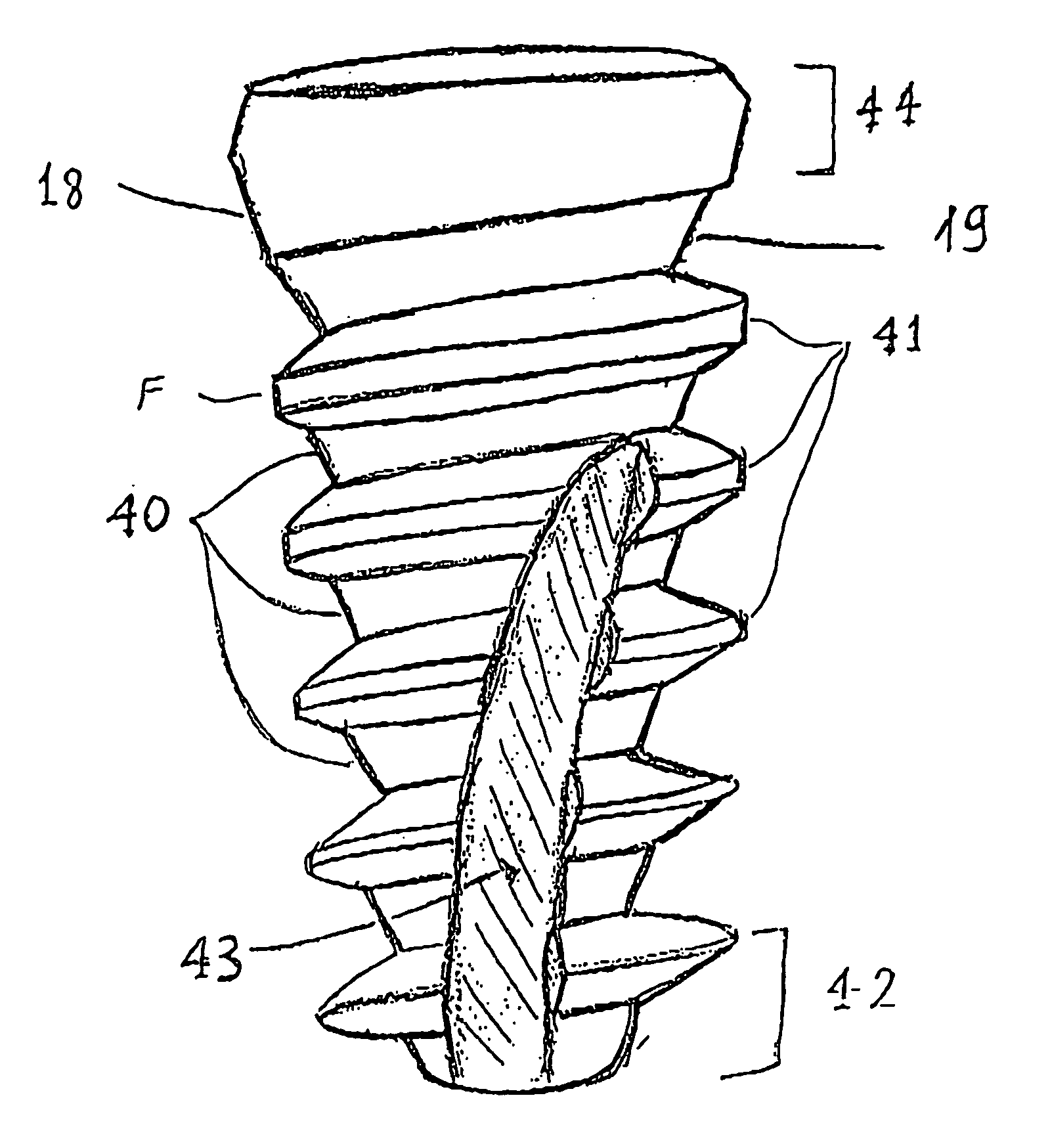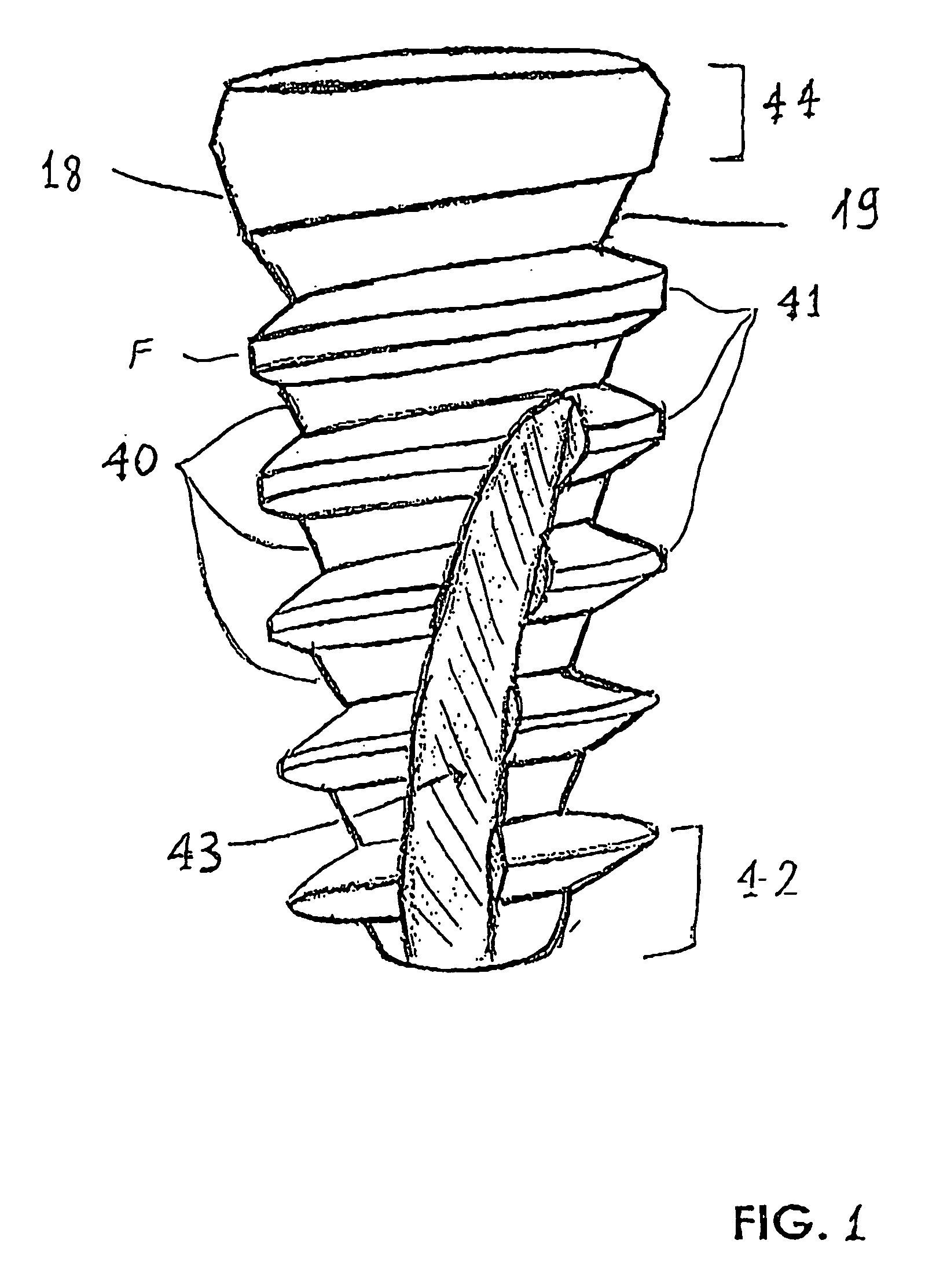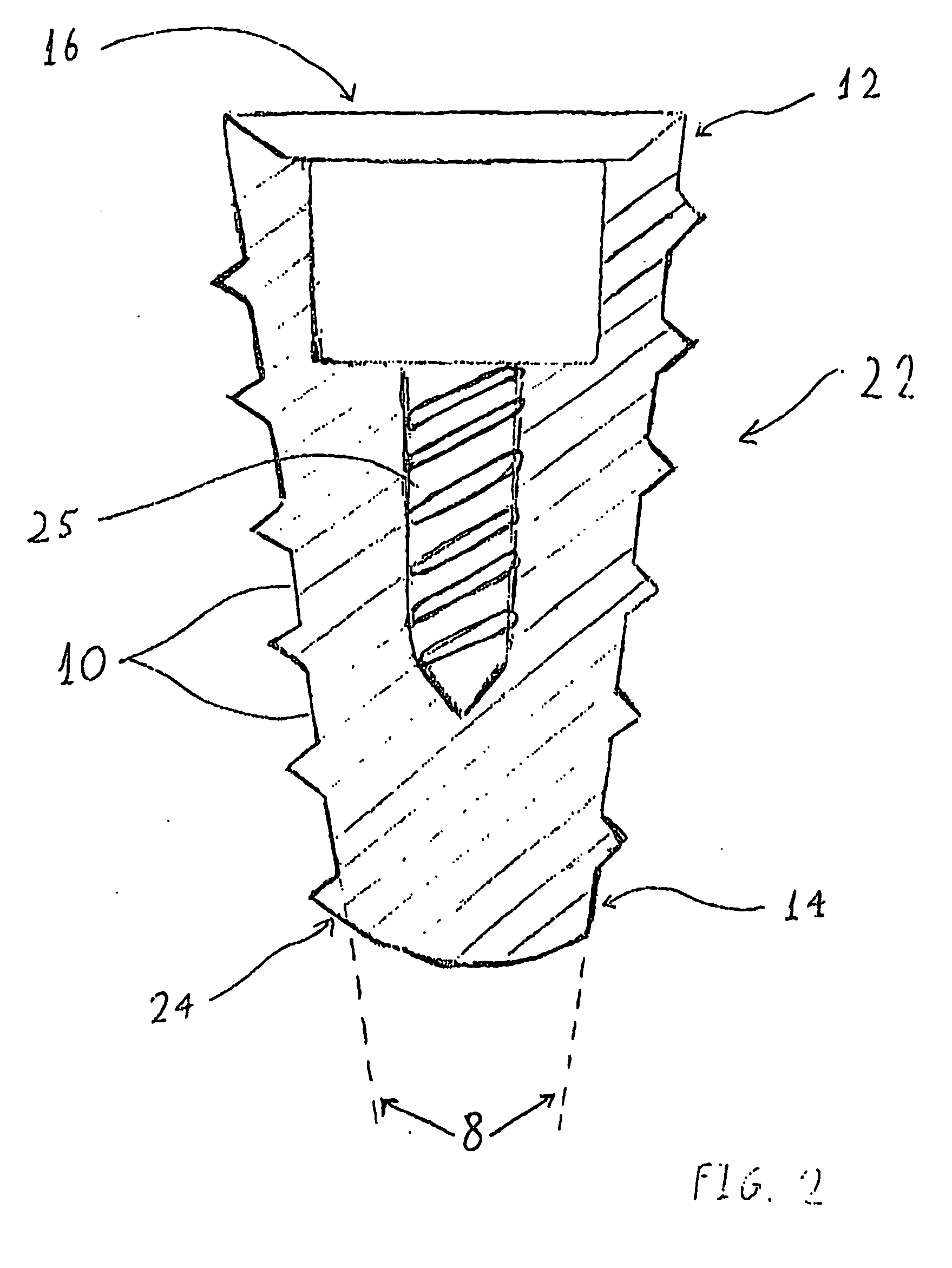Condensing skeletal implant that facilitate insertions
a skeletal implant and condensing technology, applied in the field of bone anchorage implants, can solve the problems of difficult control of the implant position, difficult to achieve the stability of the dental implant in low-density bone, and difficulty in condensing the insertion
- Summary
- Abstract
- Description
- Claims
- Application Information
AI Technical Summary
Benefits of technology
Problems solved by technology
Method used
Image
Examples
Embodiment Construction
[0096]FIG. 1 illustrates an embodiment of the novel tapered condensing dental implant. There are five elements in a dental implant that influence the condensation, insertion and stabilization of the implant. 1) The core of the implant 40. 2) The Threads 41. 3) The most apical region 42 which touches the bone first. 4) The bone tap 43. 5) The most coronal region 44 which engages the cortical bone and the sometimes also the gums.
[0097] In order to have good stabilization in low density bone it is recommended to use small diameter drill and tapered implant. As the diameter of the drill is smaller and the implant is more tapered the bone is more preserved and more condensed resulting in improved stabilization, but the insertion is more difficult. In this case controlling the exact path of insertion of the implant becomes also more difficult since the implant has a tendency to slip towards the region with the lowest density. In order to use a small diameter drill and an implant with sig...
PUM
 Login to View More
Login to View More Abstract
Description
Claims
Application Information
 Login to View More
Login to View More - R&D
- Intellectual Property
- Life Sciences
- Materials
- Tech Scout
- Unparalleled Data Quality
- Higher Quality Content
- 60% Fewer Hallucinations
Browse by: Latest US Patents, China's latest patents, Technical Efficacy Thesaurus, Application Domain, Technology Topic, Popular Technical Reports.
© 2025 PatSnap. All rights reserved.Legal|Privacy policy|Modern Slavery Act Transparency Statement|Sitemap|About US| Contact US: help@patsnap.com



